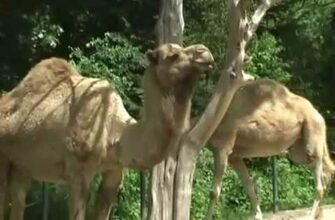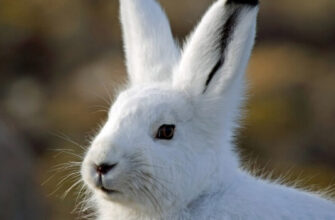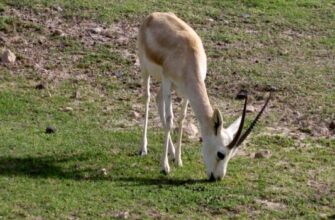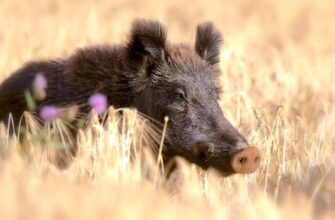Marmot is a mammalian animal belonging to the order of rodents from the squirrel family. Representatives of the species weigh several kilograms and live in open space. Exceptionally social herbivores, wrapped in warm fur and hiding in burrows from sultry steppes to cold mountains. There are many classifications of these cute animals, which will be discussed later.
Origin of the species and description
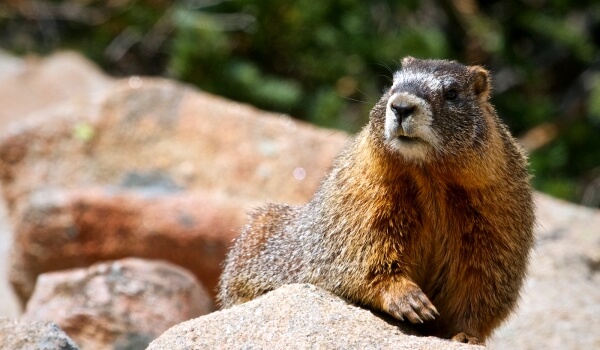
Determining the origin of marmots has been a difficult task for scientists, but they managed to solve this mystery by analyzing information about fossil animals and modern equipment.
Currently, there are the following common types of marmots:
Bobak group: gray, Mongolian, living in the steppe and forest-steppe;
- Grey;
- Black-capped;
- Yellow-bellied;
- Tibetan ;
- Alpine subspecies: broad-faced and nominative;
- Talas (Menzbir’s marmot);
- Woodchuck – has 9 subspecies;
- Olympic (Olympic).
These species belong to the order of rodents, of which there are more than two hundred thousand, which cover the entire territory of the planet, except for some islands and Antarctica. It is believed that rodents originated about 60-70 million years ago, but some argue that they originated in the Cretaceous period.
Approximately 40 million years ago, the ancient ancestor of marmots was born at the beginning of the Oligocene, after an evolutionary leap and the emergence of new families. It is assumed that marmots are the closest relatives of squirrels, prairie dogs and various flying squirrels. At that time, they had a primitive structure of teeth and limbs, but the perfection of the design of the middle ear speaks of the importance of hearing, which has survived to this day.
Appearance and features
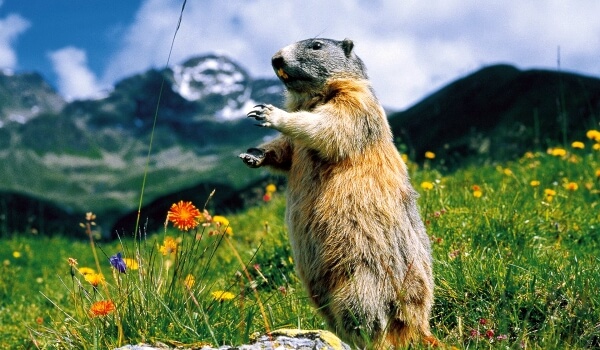
The steppe marmot or bobak from the bobak group is almost the largest of the squirrel family, because its length is 55-75 centimeters, and the weight of males is up to 10 kg. It has a large head on a short neck, a voluminous body. The paws are incredibly strong, on which it is hard not to notice large claws. A feature is a very short tail and a sandy-yellow color, which turns into dark brown on the back and tail.
tail, although it is difficult to distinguish from. But still it is possible, because the gray has softer and longer hair, and the head is darker.
The third member of the group is the Mongolian or Siberian marmot. It differs from relatives by a much shorter body length, which is a maximum of 56 and a half centimeters. The coat color of the back is dark with black-brown ripples. The belly is black or black-brown like the back.
The last representative of the bobak group is the forest-steppe marmot. It is described as a rather large rodent of sixty centimeters in length and a tail of 12-13 cm. The back is yellow, sometimes with black admixtures. There is quite a lot of fur near the eyes and cheeks, which protects the eyes from dust and small particles carried by the wind.
The grey-haired marmot is not called at all because of the tendency to lose the color of the coat closer to old age, but because of the gray coloration on the upper back. Quite long, because it reaches 80 cm with a large tail of 18-24 cm. Weight is constantly changing: from 4 to 10 kg, due to long hibernation. Females and males are very similar in appearance, but differ in size.
The woodchuck from North America is quite small, because its length is from 40 to 60-odd centimeters, and weighs 3-5 kg. Males, as among gray-haired marmots, are similar to females, but larger in size. Paws are similar to steppe marmots: short, strong, well adapted to digging. The tail is fluffy and flat 11-15 cm. The fur is coarse, with a warming undercoat with a red color.
Where do marmots live?
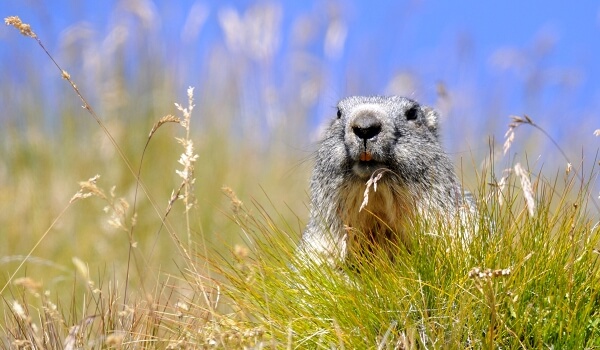
The steppe marmot, also known as the marmot, lived in the distant past in the steppe, and sometimes in the forest-steppe, from Hungary to the Irtysh, while bypassing the Crimea and Ciscaucasia. But due to the plowing of virgin lands, the habitat area has been greatly reduced. Large populations have been preserved in the Lugansk, Kharkov, Zaporozhye and Sumy regions in Ukraine, in the Middle Volga region, the Urals, in the Don basin and in some areas in Kazakhstan.
The gray marmot, unlike its close relative, chooses more rocky territories, near meadows and river valleys. Subsequently, he settled in Kyrgyzstan, China, Russia, Mongolia and Kazakhstan. The Mongolian marmot lives up to its name and covers almost the entire territory of Mongolia. Also, the area of u200bu200bresidence extends to Northeast China. Some researchers suggest its presence in the North-Western part of the country of the Rising Sun. On the territory of Russia, it is found in Tuva, Sayan and Transbaikalia.
The grizzled marmot lives on the neighboring continent of North America, most commonly Canada and the Northeastern United States. Prefers mountains, but in the North of Alaska descends closer to the sea. It occupies alpine meadows, mostly not covered with forests, but with rocky outcrops.
The woodchuck settled a little to the west, but prefers plains and forest outskirts. The most common marmot in the United States: the northern, eastern and central states are practically under their jurisdiction. Also, some representatives of the species climbed into central Alaska and to the South of Hudson Bay. Some animals inhabited the Labrador Peninsula.
Forest-steppe marmots occupy much less land than all the rest. They have been preserved in the Altai Territory, Novosibirsk and Kemerovo regions. They like to dig holes in which they live, near steep slopes, streams, and sometimes large rivers. Attract places planted with birches and aspens, as well as a wide variety of grass.
What do marmots eat?
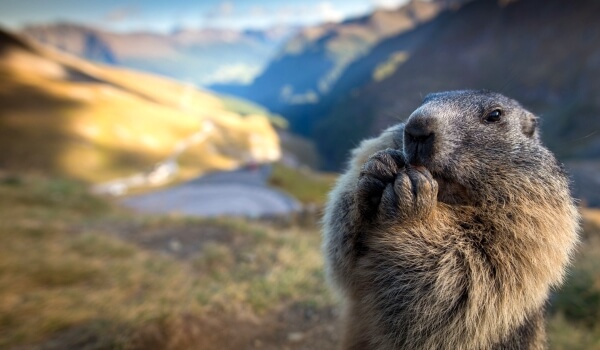
Baibaks, like all marmots, feed on plants. Among them, they prefer oats, which are found in the steppe, and not from human fields, which does not make them pests. Other crops are also rarely touched. Sometimes they feast on clover or bindweed. It all depends on the season. In the spring, when food is scarce, plant roots or bulbs are eaten. In captivity, they eat meat, even relatives.
Gray marmots are also vegetarians, but in captivity they have not been observed eating animal meat, especially representatives of the same species. From plant foods, young shoots are preferred. Sometimes they do not disdain leaves, even trees. Some romantic natures prefer flowers that can be brought to the opposite sex, just like people, but as food.
The diet of woodchucks is more diverse, because they climb trees and swim across rivers for food. Basically, they eat the leaves of plantain, dandelion. Sometimes they hunt snails, beetles and grasshoppers. In the spring, when food is scarce, they climb apple, peach, and mulberry trees and eat young shoots and bark. In vegetable gardens, peas or beans can be grabbed. Water is obtained from plants or by collecting morning dew. They don’t stock up on anything for the winter.
In many ways, the diet of marmots is similar, some food inherent in certain regions differs. Some may attack people’s gardens, and some will eat the meat of captive relatives. But they are united by the fact that the basis of the diet is plants, in particular their leaves, roots, flowers.
Character and lifestyle features
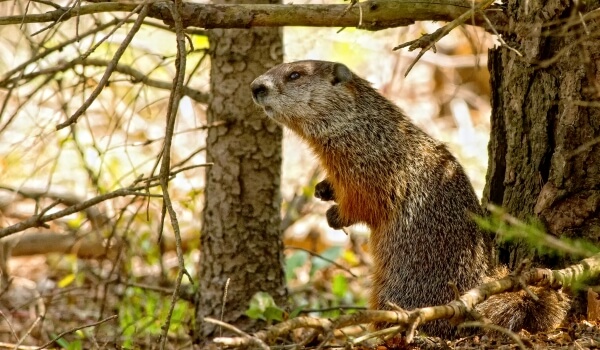
Baibaki, after emerging from hibernation, fatten up and begin to repair their holes. Activity begins immediately at sunrise and ends only at sunset. Animals are very social: they post sentries while others feed. In case of danger, they inform the rest of the impending threat, and everyone hides. Quite peaceful creatures that rarely fight.
Gray marmots are also diurnal creatures, known to feed on plants. Their colonies are very large and often exceed 30 individuals. Thus, all this herd occupies 13-14 hectares of land and has a leader: an adult male marmot, 2-3 females and a large number of young marmots up to two years old. Burrows are simpler than those of bobaks and consist of one hole 1-2 meters deep. But their number exceeds a hundred.
Woodchucks are very wary and rarely leave their burrows. Summer shelters are equipped in well-lit areas. Winter burrows are hidden in forests on hillsides. Unlike gray marmots, forest marmots build a complex structure of holes, which sometimes have more than 10 holes and 300 kg of discarded earth. They lead a sedentary, anti-social lifestyle.
The way of life is more dependent on the territory in which marmots live than the food they eat. Some live with females separately from each other, and some stray into entire armies of 35 individuals. Some dig simple holes, while others plan intricacies, paying attention to emergency exits and latrines.
Social Structure and Reproduction
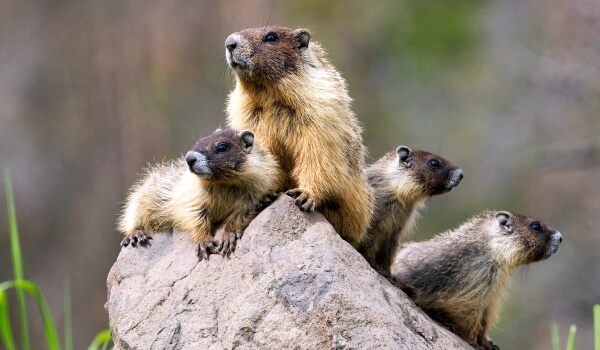
At the beginning of spring, the mating season begins for bobaks. The duration of pregnancy is a little over a month. 3-6 cubs are born. Newborns are very small and defenseless, so parents take care of them very reverently in the early stages of life. Females drive males to other holes for the feeding period. At the end of spring, little marmots begin to feed on grass.
Females of grey-haired marmots give birth to 4 to 5 cubs a little later than marmots – this event falls at the end of spring or early summer. Pregnancy also lasts about a month. Children of grey-haired marmots are earlier and by the third week they are already getting to the surface, having fur and starting to wean themselves from feeding with milk.
If the females of the gray-haired marmots allow the males to help them during pregnancy, and the females of the marmots drive the males into other holes, then the pregnant woodchucks are extremely aggressive and even members of their flock have to save themselves. It is no wonder that males immediately leave after conception, or rather they are driven away.
Forest-steppe marmots are more loyal to each other and hibernate even letting their neighbors into holes. Sometimes they do not prevent intruders in the form of badgers or other animals. Females of these friendly animals give birth to 4-5 cubs, and sometimes even 9!
Groundhogs’ natural enemies
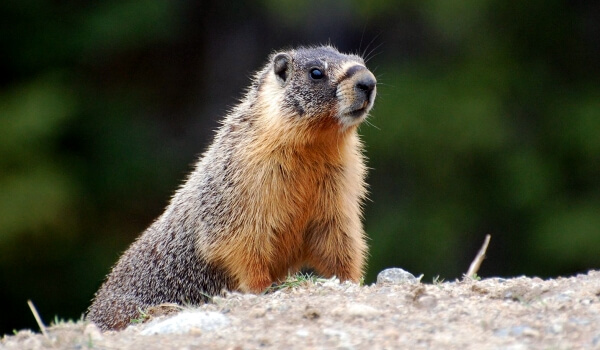
By themselves, marmots do not pose a danger to anyone, in rare cases, insects or snails may not be lucky. Therefore, they are hunted by all predators that can meet them. The unenviable position of marmots is worsened by the fact that they do not have any physical features: speed, strength, maneuverability, poison, etc. But more often than not, their group intelligence and care for each other saves.
Baibaki can die in the mouth of a wolf or a fox, which can climb into a hole. On the surface, while feeding, or warming in the sun, birds of prey can attack: eagle, hawk, kite. Also, steppe marmots often become the prey of corsacs, badgers and ferrets, which millions of years ago occurred together with marmots from the same ancestor. Woodchucks are also subject to a whole range of dangerous predators.
Added to all those named more and more:
- pumas;
- lynxes;
- martens;
- bears;
- birds;
- large snakes.
Small predators can attack cubs in holes. Although in most agricultural areas they are little threatened, because people destroy or drive away their enemies. But then stray dogs are added to the category of threats. Therefore, the prospects for marmots are not bright. In addition to human sabotage, many animals prey on harmless animals. Because of this, many species, such as the forest-steppe marmots, are subject to a strong reduction, and it is the task of man to prevent this.
Population and species status
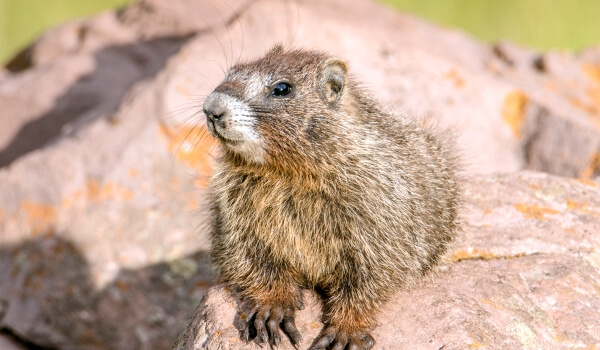
Groundhogs are a numerous species that has spread over a large part of the planet. They live in different conditions and have developed different skills of social communication, raising offspring, obtaining food and, most importantly, protection from local predators that are eager to send them to the next world. All this influenced the territory of the settlement of representatives of the species and their number.
Baibaks are not an endangered species, although their numbers in the 40-50s of the last century were greatly reduced. Thanks to coordinated actions, it was possible to stop the disappearance of these animals. Although in some regions they are on the verge of extinction. The symbol of the Lugansk region was included in the Red Book of Kharkiv region in Ukraine and the Ulyanovsk region in Russia in 2013.
Mongolian marmots are also not numerous and are listed in the Red Book of Russia. It is estimated that there are about 10 million of them left, which is an extremely small number. Conservation and restoration activities in relation to the species are complicated by the fact that they are carriers of the plague.
North American residents: gray and gray marmots only increase their population over time. This happens due to the fact that they have learned to adapt to people better than other marmots. The plowing of the soil, which led to the reduction of bobaks, only increases forage reserves. Also, in times of famine, they feed on plants that have grown in gardens, vegetable gardens and fields.
Some marmots need to be carefully protected in order not to let them disappear, some simply do not interfere, and they will recover on their own, some have learned to adapt to harm a person, others even benefit from it. Therefore, such a strong differentiation of species depends on the original features and the ability to adapt to new conditions.
Marmots are vegetarians that feed on leaves, roots and flowers of plants, although some in captivity eat meat. Some of them live in large flocks, while others prefer loneliness. They live on most continents of the Earth in separate species populations. At first glance, they are so similar, but upon closer examination, they are so different.

